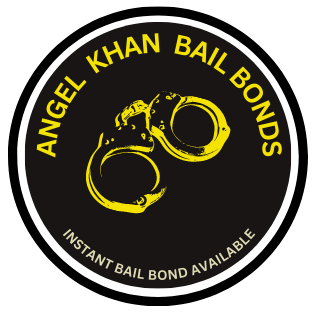Optimizing keyword placement is a nuanced art that goes beyond simply inserting keywords into your content. It requires understanding the specific locations, context, and frequency that will signal relevance to search engines without risking penalties for over-optimization. This guide provides a comprehensive, step-by-step methodology to refine your keyword placement strategy, grounded in technical best practices and real-world examples, ensuring that your content ranks higher and attracts targeted traffic effectively.
1. Understanding Exact Keyword Placement Techniques for SEO Optimization
a) How to Identify Optimal Keyword Locations within Content
Precise keyword placement begins with a detailed content audit. Use tools like SEMrush, Ahrefs, or Screaming Frog to map your existing keywords to specific sections. Identify high-value locations such as the opening paragraph, subheadings, conclusion, and embedded multimedia descriptions. For example, place primary keywords within the first 100 words to ensure immediate relevance. Conduct a semantic analysis of top-ranking competitors by extracting their keyword locations using tools like Surfer SEO or MarketMuse to see where they naturally embed target keywords.
b) Determining the Right Frequency and Density for Keywords
Avoid keyword stuffing by adhering to optimal density thresholds—generally 1-2% for main keywords. Use tools like Yoast SEO or Rank Math to monitor density during content creation. For instance, in a 1,000-word article, aim for 10-20 instances of your primary keyword, spaced evenly across the content. Break the text into logical sections, and assign a target keyword frequency per paragraph to maintain natural flow. Remember, context matters—embed keywords where they fit naturally to prevent penalties for unnatural insertion.
c) Analyzing Competitor Keyword Placement Strategies
Perform a competitive analysis by examining top-ranking pages. Use SEO audit tools to extract their keyword distribution maps. For example, note whether they place keywords in subheadings, meta tags, or within multimedia descriptions. Identify patterns such as frequent keyword appearance in header tags (<h2></h2>), or strategic use in alt texts. Replicate these placements thoughtfully, ensuring your content remains natural and user-focused. For instance, if competitors embed keywords in bullet points, do the same with meaningful, relevant phrases rather than forced keywords.
2. Implementing Structured Data and HTML Tags to Enhance Keyword Visibility
a) Using Header Tags (H1-H6) for Keyword Prioritization
Leverage header tags to establish keyword hierarchy. Place your primary keyword in the <h1> tag, which should be unique and descriptive of the content. Use <h2> and <h3> tags to include secondary keywords or variations, helping search engines understand the content structure. For example, for a page about “SEO Keyword Placement,” the <h1> might be “Comprehensive Guide to SEO Keyword Placement Techniques“, with subheaders like “Optimizing Header Tags for SEO“.
b) Incorporating Keywords into Meta Titles, Descriptions, and Alt Texts
Meta tags are prime real estate for keywords. Craft meta titles that begin with your primary keyword, followed by brand or secondary terms. For instance, “Effective Keyword Placement Strategies for SEO Success” is more impactful than generic titles. For meta descriptions, include the keyword naturally within the first 150 characters, emphasizing value. Alt texts for images should describe the image with relevant keywords, e.g., <img src="seo-strategies.png" alt="Keyword placement in SEO content">. Use schema markup to reinforce content context, such as Product, Article, or FAQ schemas, embedding keywords within relevant properties to signal importance.
c) Leveraging Schema Markup to Reinforce Keyword Context
Implement schema markup (JSON-LD preferred) to explicitly define the content type and embed relevant keywords. For example, in an article schema, include headline, description, and keywords properties with targeted keywords. Use tools like Google’s Structured Data Markup Helper to generate and validate your markup. This structured data helps search engines better understand your content’s thematic relevance, especially when combined with precise keyword placement in visible elements.
3. Practical Step-by-Step Guide to Placing Keywords in Critical Content Areas
a) Embedding Keywords in the First 100 Words of Content
Start your article with your primary keyword within the first 100 words. For example, if your keyword is “SEO keyword placement”, open with: “Effective SEO keyword placement is vital for achieving higher search engine rankings. In this guide, we explore technical and strategic techniques to optimize your keyword positioning.” This signals relevance early to both users and search engines. Use a natural tone, avoiding keyword stuffing—integrate synonyms or related phrases to maintain readability.
b) Strategically Placing Keywords in Subheadings and Bullet Points
Subheadings (<h2>, <h3>) should contain variations or long-tail keywords relevant to the section’s content. For example, in a section about multimedia optimization, use “Optimizing Images with Keywords”. Bullet points are excellent for highlighting specific techniques, such as:
- Use descriptive filenames: Incorporate keywords like
seo-keyword-placement-guide.png. - Alt texts: Describe images with relevant keywords naturally.
- Video descriptions: Embed keywords seamlessly within captions and transcripts.
c) Ensuring Natural Keyword Integration in Body Text
Use the inverted pyramid style: introduce the main keyword early, then discuss related concepts with variations. Employ LSI keywords (Latent Semantic Indexing) to diversify keyword presence. For example, instead of repeatedly using “keyword placement,” alternate with “SEO content optimization,” “keyword positioning,” or “search relevance techniques.” This approach maintains readability and prevents penalties.
4. Techniques for Optimizing Keyword Placement in Multimedia Elements
a) Using Keywords in Image Filenames and Alt Attributes
Rename image files to include target keywords before upload, e.g., seo-strategies-2024.png. For alt attributes, write descriptive, keyword-rich alt texts that accurately describe the image, such as “Illustration of keyword placement in SEO content”. This improves image search visibility and contextual relevance. Use tools like TinyPNG or ImageOptim to compress images without losing quality, ensuring fast page load times alongside optimized metadata.
b) Incorporating Keywords into Video Titles, Descriptions, and Transcripts
Video content should embed keywords naturally in titles and descriptions. For example, a video titled “How to Master Keyword Placement for SEO” directly targets the keyword. Within descriptions, include keywords early, such as: “Learn proven techniques for keyword placement in SEO content to boost rankings.”. Transcripts should be verbatim, with keywords inserted at natural points, providing additional SEO value and accessibility.
c) Embedding Keywords in Interactive Content (e.g., FAQs, Quizzes)
FAQs should target long-tail keywords in questions, e.g., “How do I place keywords effectively in SEO content?“. Use keyword-rich anchor texts for internal links within quizzes or interactive modules—e.g., linking to related articles with anchor text like “SEO keyword placement techniques“. This strategy enhances user engagement and reinforces keyword relevance.
5. Avoiding Common Mistakes in Keyword Placement and How to Fix Them
a) Over-Optimization and Keyword Stuffing Risks
Exceeding the recommended keyword density leads to search engine penalties. To prevent this, utilize tools like Surfer SEO to analyze your keyword density in real-time. If your primary keyword exceeds 2%, identify and remove redundancies, replacing overused instances with related LSI keywords or synonyms. Always prioritize readability; if a sentence feels forced, revise it to sound natural while retaining keyword intent.
b) Ignoring Context and User Intent in Placement Strategy
Misplaced keywords that don’t align with user intent can harm your SEO. Conduct keyword intent analysis using search engine results pages (SERPs) and tools like Answer the Public. For example, avoid inserting transactional keywords into informational sections. Instead, match keyword types to content purpose: informational keywords in blog posts, transactional in product pages. Regularly review analytics data to identify keywords that attract high bounce rates and adjust placement accordingly.
c) Failing to Update Keyword Placement Based on Performance Data
Implement a routine content audit schedule—monthly or quarterly—to analyze keyword performance via Google Search Console or SEMrush. Identify underperforming keywords and re-optimize their placements by increasing prominence or updating related content. For example, if a keyword isn’t ranking despite good placement, consider adding it to new subheadings or supplementing with LSI terms in body text. Continuous refinement ensures sustained SEO success.
6. Case Study: Step-by-Step Optimization of a Blog Post’s Keyword Placement
a) Initial Content Audit and Keyword Mapping
Begin with a detailed audit using SEMrush’s Keyword Gap tool to identify target keywords and map them to existing content. For example, a blog about “Content Marketing Strategies” might target “content creation,” “auditing,” and “distribution.” Use a spreadsheet to log current placements, densities, and gaps. Identify opportunities such as missing keywords in headers or alt texts.
b) Applying Precise Placement Techniques in Drafts
Revise the draft by embedding primary keywords in the <h1> and opening paragraph. Add secondary keywords to subheaders and bullet points. For example, update a subheader to “Effective Content Creation and Distribution” to include relevant keywords. Use tools like Clearscope to ensure keyword density remains optimal. Review the flow to ensure natural integration—avoid keyword stuffing.
c) Monitoring Results and Refining Placement Strategies
Publish updated content and monitor rankings via Google Search Console. Track user engagement metrics such as bounce rate and time on page. If rankings stagnate, consider re-optimizing by adding new LSI keywords or adjusting header placements. Use heatmaps to see where users focus—if certain keywords are underperforming, reposition them for better visibility. Regularly revisit the content every 3-6 months for ongoing optimization.
7. Final Best Practices for Maintaining Effective Keyword Placement Over Time
a) Regular Content Audits for Keyword Optimization Opportunities
Schedule quarterly reviews of all your content. Use tools like Screaming Frog or Sitebulb to identify outdated placements or underutilized keywords. Update headers, meta tags, and multimedia descriptions to reflect current keyword strategies. For example, if a new keyword trend emerges, incorporate it into relevant existing content with minimal disruption.
b) Using SEO Tools to Track Keyword Performance and Adjustments
Leverage Rank Tracker modules in SEMrush or Ahrefs to monitor keyword rankings over time. Set alerts for significant drops and investigate whether placement issues or external factors are at play. Use heatmaps and scroll maps to identify sections where keywords could be better emphasized. Adjust placement based on data

